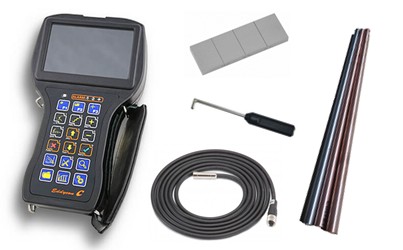8 Eddy Current Test system
Eddy Current Test system
Contact: Mr.Kedar Satish Bhope
(kedar AT ipr.res.in)
Ph.No: +91-79-2396 4156/4420
Eddy Current Testing (ECT) is a non-destructive testing method which utilized the principle of electromagnetism to characterize the integrity of electrically conducting structural materials and components. A Portable Eddy Current Test System (Model: Eddycon C, OKOndt Group) is recently set-up at High Temperature Technologies Division, IPR. A system consists of Eddy Current flaw detector, surface and bobbin eddy current probes, calibration standards to detect surface and sub-surface defects presents in materials and components. This facility have a potential utilization such as,
1. To check the surface defects in Divertor plasma facing components at various stages of manufacturing as well as at in-service inspection,
2. To evaluate electrical conductivity of material and
3. To inspect raw materials, multilayered structures and tubes.
System Features:-
Frequency Range up to 16MHz in dual frequency mode and multiplexing.
Surface probe for flat/curved surface components and bobbin probe for tube inspection.
Compatible with encoder and data storage up to 8 GB.
Non-contact inspection with immediate results.
Compatible with probes and rotary scanners of various makes and types.


